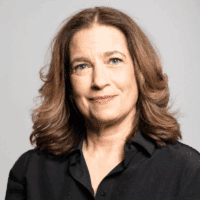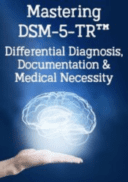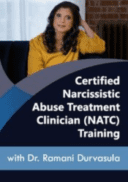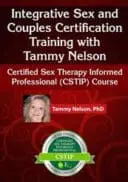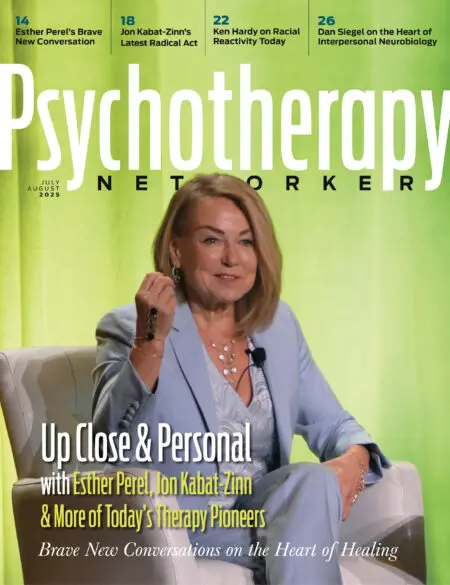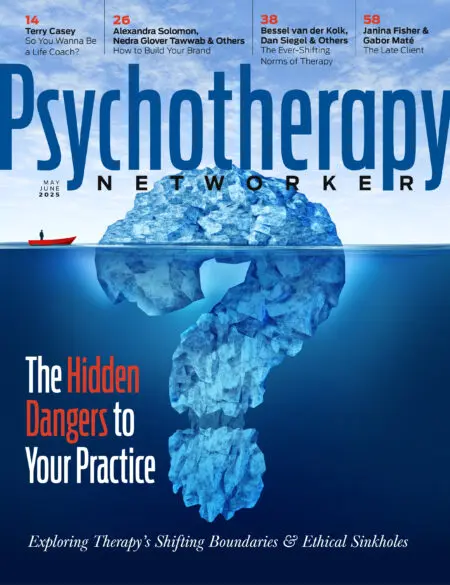During Rachel’s first session with me, Hilary, she made a heart-wrenching statement: “I don’t think I’ll ever enjoy being a mom.”
A 32-year-old mother with two young children, Rachel finds little joy in motherhood. When her kids throw tantrums, cry uncontrollably, or complain, Rachel blames herself. Like so many parents, she interprets her children’s distress as evidence of “bad mothering.” And she’s far from alone.
What is it that makes mothers feel so guilty, even when they give their children everything and make endless sacrifices? I’ve pondered this question deeply—both as a mom and psychotherapist.
As a mom, I often felt guilty despite my total devotion to my children. I felt guilty when I had a second child (were they both getting shortchanged?), guilty for working, and even guilty for loving my work and other pursuits unrelated to motherhood. As a therapist, I became fascinated by guilt itself. When parents tell me they feel guilty, I’m eager to help them uncover the roots of this painful emotion so they can use it constructively—or finally let it go.
One survey found that parents feel guilty over 20 times each week. Cultural expectations, family conflicts, and working outside the home can ignite this painful emotion. In addition, unrealistic expectations of perfect mothering, also known as the motherhood myth, can play a role. This myth perpetuates beliefs about motherhood as intrinsically fulfilling and femininity as effortlessly nurturing. So when child-rearing doesn’t always fuel maternal bliss, many mothers fall on the sword of self-blame and fall victim to social comparison, loneliness, and isolation, which only worsen maternal guilt.
Many us have been taught that guilt is a self-conscious emotion that helps us follow the rules of society and prevents us from harming others, including our children. It’s an emotion that makes us reflect on our actions and think twice. Too much guilt, however, can lead to symptoms of depression and anxiety, as it did for Rachel.
Before beginning therapy with me, she’d tried antidepressants, exercise, meditation, and cognitive-behavioral therapy. None of those interventions, however, had eased her suffering. No matter how hard Rachel tried to feel better about herself and motherhood, a deep sense of foreboding and sadness lingered.
I practice a form of psychotherapy called AEDP, grounded in the science of emotions and attachment theory. Instead of asking our patients to challenge their upsetting thoughts, AEDP therapists focus on their patients’ emotional lives. And since all emotions begin in the body, we gently draw our patients’ attention to their inner experience.
To help Rachel feel my support and care, I gently said, “Let’s slow way down together. I’ll name each emotion one-by-one, and you tell me if you notice them inside of your body.”
I asked Rachel if there was anxiety, guilt, sadness, anger, fear, disgust, or all of the above, pausing after each emotion to give her time to tune into herself.
She said yes to anxiety, guilt, sadness, anger, and fear.
“No wonder you’re so weighed down. You’re carrying a lot. Which emotion is front and center?” I asked Rachel.
“Definitely guilt!” she said.
Since guilt feels so awful, it has the power to convince mothers that not meeting all their children’s needs makes them inadequate. Mothers who desire a break from their children, or occasionally have negative thoughts about them, also feel guilty, even though these are normal reactions to parenting.
To alleviate this discomfort, parents often say “yes” to their kids when they want to say “no,” behaviors that fuel “intensive parenting,” which drives parents to continually sacrifice their time and well-being for their kids, a practice that can lead to burnout. A better solution begins with understanding how guilt (and other emotions) work in the mind and body.
To help Rachel work through her guilt and depression, I introduced her to the Change Triangle, an emotional health tool derived from AEDP psychotherapy. You can visualize the Change Triangle as an upside-down triangle illustrating the dynamics of internal emotional processes that, until we begin tracking them, usually occur outside of our conscious awareness. Our “core emotion corner” is represented by the point at the bottom of the triangle, a visual nod to how our core emotions and authentic Self—an open-hearted state of calm, connection, curiosity and compassion—are often buried or covered up while still being foundational. The two top points of the triangle represent, respectively, the “defense corner” on the left and the “inhibitory emotion corner” on the right, since defenses and inhibitory emotions play a significant role in protecting us from frightening or forbidden core emotions.
In Rachel’s case, when we’re in the defense corner, we’re using protective defenses to avoid emotional pain. Rachel’s defenses included perfectionism, symptoms of depression, and self-criticism. Other common defenses include feeling numb, addictions, and conflict avoidance.
When we’re at the top right of the triangle, we’re experiencing “inhibitory emotions,” which include anxiety, shame, and guilt. These emotions disconnect us from our core emotions—evolutionary survival programs that are not under conscious control. They can’t be stopped, only avoided, and not without consequences. But when we learn how to experience them safely in the body, core emotions usher us into a physiologically regulated state where we feel calmer, clearer, and can make sound decisions.
Using the Change Triangle as an emotional map, I explained to Rachel that depression isn’t just a chemical imbalance, but an emotional one. When we don’t validate and honor our core emotions, they get buried under defenses and inhibitory emotions, leading to numbness, exhaustion, a sense of disconnection, and depression.
In Rachel’s case, depression wasn’t just depression. It was unprocessed guilt and other core emotions she’d avoided for years that caused her great distress. I encouraged Rachel to slow down so she could tend to these emotions.
“I’m worried that if I let myself feel these emotions fully, it’ll confirm my deepest fear—that I’ve failed my children,” she said.
“You have most definitely not failed your children,” I assured her. “These are just normal emotions coming up, and we can tend to them together. Do you feel me with you?” I asked.
“Yes,” she said.
“Stay with what’s coming up and stay with me,” I encouraged her. In AEDP, we work to “undo aloneness,” which is pivotal in healing trauma. Being explicit that the patient is not alone helps them feel safe to explore their inner world, experience their feelings, and speak their truth. Reminding them that we are “with them,” especially when they become dysregulated and distressed, is one way we do this.
As Rachel connected to her guilt, something unexpected happened: instead of overwhelming her, it softened her. She grieved and cried for the mother she had been—imperfect, struggling, and human. And as she wept, something shifted. For the first time, Rachel felt the sorrow that hid beneath her guilt—a sorrow for not being the idealized mother she’d hoped to be.
She finally realized that her guilt wasn’t evidence of failure. Quite the contrary, it was a sign of how much she cared about her children. By accepting her core emotions, authentic self, flaws, and virtues, she found greater peace, energy for mothering, and confidence to care for herself and her family.
What Guilt Disguises
Sienna came to see me, Juli, because she was feeling more and more irritable, withdrawn, and depressed. She dreaded spending time with her mother because she trampled on Sienna’s boundaries and constantly criticized her and her kids. Recently, her mom had been hounding her to schedule an extended summer visit, barking guilt-inducing quips like, “You never spend enough time with me!”
In therapy, Sienna relayed this story like a reporter sharing facts, not feelings: “The truth is, we really are busy, so it’s impossible to commit. My husband travels for work, the kids have swim practice, and I’m volunteering at our local library.”
Sienna was doing something we all do to protect ourselves from the unbearable: relying on a defense called rationalization, which is when we justify our decisions or actions using logic and reason to keep emotions away.
As a psychodynamic and AEDP-trained psychotherapist, I’ve witnessed how many patients mistake defenses for what AEDP developer Diana Fosha calls “feeling and dealing,” the process of fully experiencing our emotions so we can use them in ways that are maximumly adaptive for our wellbeing.
Since defenses temporarily block emotions, they can numb pain. It’s easy to mistake numbing for a sense that everything is okay. Personally, I’ve also relied on defenses, such as too much people-pleasing or avoidance, to handle my own mom guilt. Even though I’m well-versed in The Change Triangle, I’ve said yes to my child when I wanted to say no, not realizing that my guilt was blocking core emotions like sadness.
Often, these reflexive ways of coping are passed down from our parents and caregivers. In many families, including Sienna’s, painful moments were met with words such as “suck it up,” “don’t think about it,” or “stop being a drama queen.” Instead of tuning into their children’s emotions, these parents pushed them away. It’s a cycle of emotional discomfort that travels through generations, further cemented by our emotion-phobic society.
Like most of us, Sienna wasn’t consciously aware of her defenses—they were still ego-syntonic, meaning she didn’t realize her defenses were holding her back. For decades, she’d relied on rationalization to block her emotions, which helped her survive her mother’s wrath.
The Change Triangle helps patients identify their defenses, as well as blocked and buried inhibitory and core emotions, bringing them into awareness. For example, when Sienna recounted her mother’s words, “You never spend enough time with me,” and then said, “The truth is we really are busy, so it’s impossible to commit,” I invited her to check in with her body, letting it be her guide to name her emotions.
“Can we slow way down . . . to a snail’s pace . . . to see what’s coming up for you right now?” I asked. “Let’s take six deep belly breaths together. Feel into your body. What sensations do you notice as you’re sharing about your mother?”
“My shoulders feel tense, and my stomach is in knots,” Sienna said.
“Those sensations are signals of an emotion that’s trying to tell you something. Can you sense what it is?”
Sienna broke eye contact with me and looked down at her shoes. I saw her shoulders stiffen, and for a moment, she remained silent. For this young mother, emotional honesty had never been met with understanding, connection, or compassion. Instead, she’d been shamed, ridiculed, and made to feel guilty for wanting her own space and expressing her own mind. I sensed that a young part of Sienna was afraid to name her core emotions. To that young part of her, it felt off-limits, perhaps even dangerous.
“Sienna, I know it’s painful to name these emotions, especially because you were never allowed to do that with your mother,” I said, in hopes of validating what she’d been through. As a therapist who specializes in maternal mental health, I know that patients like Sienna often need permission to express their needs, desires, and emotions. It’s also crucial for the patient to feel a sense of agency with us. To make sure Sienna knew that she was in charge of what she shared, I reiterated, “We can slow down some more. There’s no rush. Remember, I’m here with you.” No one can heal trauma alone. We all need a witness to validate our pain.
Finally, Sienna looked up and made eye contact. Again, I invited her to take some deep, belly breaths. After we finished this exercise, I gently probed, “What sensations do you notice below the neck?”
“My shoulders feel tense again, and my stomach hurts,” she replied.
“How skillful that you could name these physical sensations,” I shared, hoping to affirm Sienna’s courage and honesty. “Now, can you name the emotion, any emotion, that’s coming up?”
In a meek voice, Sienna said, “It’s guilt.” She felt guilty because the idea of telling her mother no made her feel like a “bad daughter.”
Now that she’d named and validated the guilt, we could explore it together. “Sienna, if guilt is for a perceived crime, what crime have you committed if you don’t see your mother when she asks? Can you ask the guilty part of you inside your body, ‘What is my crime?’ and then listen for its answer?”
“Now, I feel like I’m making a big deal out of nothing,” Sienna told me. I noticed that her defenses were once again swooping in. “Maybe I’ve given you the wrong impression of my mother,” she explained. “She’s not really a monster.”
This is the process of healing trauma at its root. Defenses arise to protect our patients from their inner turmoil and unbearable emotions. If guilt were not front and center, working in tandem with her defenses, the anger Sienna had to block and bury toward her mother would rise to the surface. While the adult who sat across from me could handle this anger, the young part of Sienna was terrified of it.
It took many months, but by working the Change Triangle (in session and on her own), Sienna recognized her words and actions as the defenses they were. She could now try to name and validate all the core and inhibitory emotions she was avoiding.
One day, she said, “I was thinking about that question you keep asking me about guilt and what crime I’ve committed. I realized I feel guilty when I set boundaries with my mother, and I also feel guilty for putting my needs above hers.” Once she spoke these words, she realized no true wrongdoing had been committed.
Something inside her body changed as Sienna heard herself speak her truth out loud. She felt relieved, let out a deep sigh, and smiled. Gaining perspective on the source of her guilt helped loosen its grip. This relief was an opening for her to identify the core emotions she felt toward her mother. “I feel angry with my mother for violating my boundaries and hounding me,” she admitted. Engaging in dialogue and experiencing our defenses and emotions helps us discover the origins of our guilt and then move forward in new ways that honor our authentic Self.
This process helped Sienna gain clarity. She could now notice when her mother angered her and use that anger for good. She imagined putting that angry energy in her backbone so she could assert her needs. She came to feel more justified in prioritizing herself. With more room for her needs and an ability to set boundaries, she noticed that her relationship with her mother improved, even though her mom hadn’t changed.
When guilt arose, Sienna had new ways to work through it. She could now access her anger, which had been buried beneath her guilt for so long. With emotional awareness, Sienna could question this emotion by asking, “Have I truly done anything wrong, or do I just feel like I have?” Engaging in this process helped Sienna stay in her most authentic Self—a byproduct of a regulated nervous system that no longer relied on defenses for protection. By understanding the roots of her guilt, Sienna began to heal from her childhood wounds and embrace a new way of being, which helped her feel freer.
Despite its prevalence, parental guilt is often misunderstood, even by experienced clinicians. Using the Change Triangle as a guide, therapists can better understand this tricky emotion, bringing it out into the open and helping patients work through it, just as Rachel and Sienna did.
Hilary Jacobs Hendel
Hilary Jacobs Hendel, LCSW, is a certified psychoanalyst and certified AEDP psychotherapist and supervisor. She’s the author of the award-winning book, It’s Not Always Depression and co-author of Parents Have Feelings, Too, which recently won the American Book Fest best book award in the health category. Hilary is also co-developer of the Emotions Education 101™ Turnkey Curriculum and the Teen, Preteen, and Caregiver 2-hour Change Triangle Workshop Curriculum. Her blog is read worldwide. Find free resources for emotional health at Hilaryjacobshendel.com
Juli Fraga
Juli Fraga, Psy.D., is a psychodynamic and AEDP-trained psychotherapist in San Francisco, where she specializes in concerns related to parenting, relational trauma, and perinatal mood concerns. She’s also on staff at the University of California, San Francisco (UCSF) Department of Psychiatry, where she supervises residents. Dr. Fraga is the co-author of the new, award-winning book, Parents Have Feelings, Too. You can find her on Instagram @parentshavefeelingstoo and online at www.drjulifraga.com


